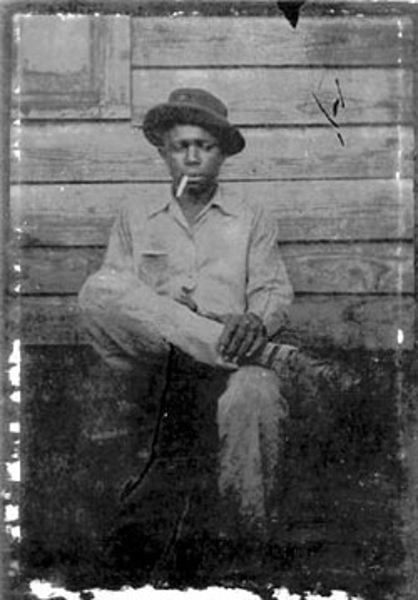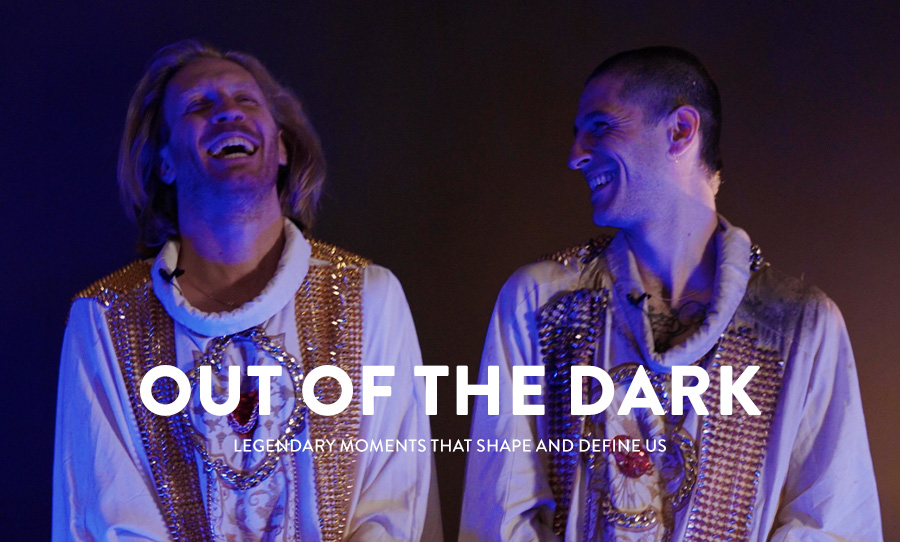Presented by The Kraken Black Spiced Rum, read on as we examine 5 of the greatest unsolved music legends.
When a person is placed in the public eye, they become subject to society’s scrutiny. When someone achieves the mantle of world fame, their story becomes the focal point for all manner of deceit, rumour, and myth. In the music world, these legends become multiplied by legions upon legions of hardcore fans until they attain global notoriety, sowing the seeds of what might just become some of the greatest unsolved music legends of all time. At this point, one of two things happen; the mystery is solved, or it propagates until the end of fame itself.
In partnership with The Kraken Black Spiced Rum, read on as we examine five of the greatest unsolved music legends.
How did Robert Johnson die?

One of the 27 Club’s earliest noted members, Robert Johnson was a legendary blues guitarist whose life was tragically cut short. Depending on who you ask, this was either by accident, malice, or an occult curse.
When Johnson was a young man he is said to have met the Devil at a Mississippi crossroads. In exchange for his very soul, the demon tuned Johnson’s guitar, gifting him unrivalled skills to conquer the world upon.
On the day of his death, the common belief is that Johnson was poisoned. Some say it was a woman who murdered him for flirting with her, others say it was that woman’s jealous husband. Nobody truly knows the manner by which the bluesman met his fate, or indeed whether his horned debtor had a hand in those final moments – and it remains one of the most intriguing unsolved music legends of all time.
Did Jack White sing on High Voltage?
High Voltage was an instant chart-throb for Electric Six when they released it as their debut single in 2003. But ears over the world were quick to notice – was that Jack White (of White Stripes acclaim) singing as the second lead vocal?
His screeches are a rare sound to come by, and to this day there hasn’t been a single music aficionado or critic – no matter how keen their ear – able to 100 percent confirm White’s presence on the track.
White has vehemently denied contributing his pipes, and so has Electric Six, over the years. But who’s to say they aren’t letting the mystery run its course?
Randy Fitzsimmons

Any solid fan of The Hives will know the name Randy Fitzsimmons, but we challenge you to find a fan who actually knows his (or her) identity. On paper, Fitzsimmons is the manager and songwriter for The Hives. He or she appears in most online accounts of the band’s history, and on all their album credits aside from covers.
In a 2003 exposé, NME claimed the “sixth Hive” Fitzsimmons was actually a pseudonym of the band’s guitarist and backup vocalist Niklas Almqvist. It was enough to silence most of the crowd, although since then there have been many fans for whom the search for the real Fitzsimmons continues.
Peanut Duck
The mystery of Peanut Duck by Martha Gee remains a favourite of soul enthusiasts and vinyl freaks to this day. As with the Twist or the Freddie, the song proclaims a how-to on this particular fad dance, although it never really did take off.
After being recorded in Philadelphia, the song was never formally released. Instead it gathered dust as an acetate disc until a British DJ found it sometime in the ‘80s. It’s the kind of song every crate digger hopes to find one day; so rare that if the disc didn’t exist, not a soul would believe it happened.
Whoever the wild Martha Gee was, we’ll never know. Luckily, we still get to enjoy the song.
The Opening Chord of A Hard Day’s Night
Arguably the most famous chord ever played on a 12-string guitar, the opening twang to The Beatles’ A Hard Day’s Night has perplexed fans since it first rung out in 1964. Contemporary truth-seekers have gone as far as engineering-specific spectrum analysis programs in attempts to draw out the chord’s secrets.
Harrison did reveal he played a G-chord with an F on top of his 12-string in 2001, but that’s hardly the complete story. Paul McCartney was playing bass, snare and cymbal bashes factor into the mix, and supposedly engineer George Martin also played a 5-note chord on a Steinway grand piano.
As time progresses, the world gets closer and closer to finally knowing exactly how this jarring yet melodic moment came to be… not bad for over 50 years of research.



